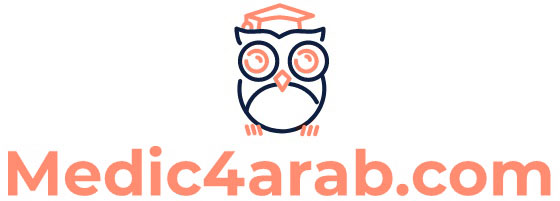MCEM Part C: 110 OSCE Stations
* How to use the book
* Principles for OSCE success
* Preparation/training/practice – How to prepare for the exam
* Practicalities – What to expect on the day
* Additional resources for the exam
Chapter 1: History taking, including acute presentations
1.1 Introduction
1.2 Abdominal pain, renal colic
1.3 Abdominal swelling, change in bowel habit, PR bleed
1.4 ALTE
1.5 Back pain
1.6 Blackout, collapse, syncope, seizure
1.7 Chest pain
1.8 Diabetes, hypoglycaemia
1.9 Dizzines, falls
1.10 Dysphagia, sore throat
1.11 Febrile convulsion
1.12 Fever, GU
1.13 Haematuria
1.14 GI bleed
1.15 Headache
1.16 Jaundice
1.17 Needlestick
1.18 Limping child
1.19 Palpitations
1.20 Rash
1.21 Sexual history, HIV, PID, PV bleed
1.22 Shortness of breath, haemoptysis, cough
1.23 Snake bite
1.24 Weakness (non-stroke), TIA, CVA
1.25 Weight loss
Chapter 2: Communication skills
2.1 Introduction
2.2 Angry parent, patient: missed fracture, diagnosis, not prescribing antibiotics, no xray
for pulled elbow
2.3 Breaking bad news: death, CVA, head injury, stopping ventilation
2.4 Capacity
2.5 CDU ward round
2.6 Confidentiality: police
2.7 Consent: blood transfusion, Gillick
2.8 Difficult referral
2.9 Driving post seizure
2.10 Major incident preparation
2.11 NAI
2.12 Prioritising patients, CDU ward round
2.13 Teaching
Chapter 3: Systems examinations
3.1 Introduction
3.2 Cardiovascular
3.3 Eye examination, slit lamp, red eye
3.4 Gastroenterology
3.5 Neurology: upper limbs
3.6 Neurology: lower limbs
3.7 Neurology: cranial nerves
3.8 Respiratory
3.9 Thyroid examination, status
Chapter 4: Joint examinations
4.1 Introduction
4.2 Ankle
4.3 Back
4.4 Elbow
4.5 Hand
4.6 Hip
4.7 Knee
4.8 Neck
4.9 Shoulder
Chapter 5: Psychiatry
5.1 Introduction
5.2 Depression
5.3 DSH, suicide risk: SAD PERSONS, poisoning: toxidromes
5.4 Mania
5.5 Mental state examination, mini mental state examination
5.6 Psychosis
5.7 Substance misuse, aggressive, disturbed behaviour
Chapter 6: Procedures/Teach a colleague
6.1 Introduction
6.2 ABG, arterial cannulation
6.3 Airway assessment, protection
6.4 Ascitic tap, drain
6.5 Central venous cannulation
6.6 Chest drain
6.7 Clearing a c-spine
6.8 Connection to a ventilator
6.9 DC cardioversion
6.10 FAST, aorta, vascular access scan
6.11 Handwashing
6.12 Intraosseous needle insertion
6.13 Knee aspiration
6.14 Lumbar puncture
6.15 Nasal packing
6.16 Nerve block: femoral
6.17 Opthalmoscopy
6.18 Otoscopy
6.19 Peak flow, inhaler, spacer, nebuliser technique
6.20 Performing an ECG
6.21 Phlebotomy, cannulation, blood cultures
6.22 Plastering
6.23 Pleural tap and aspiration, pneumothorax
6.24 Rapid sequence intubation
6.25 Surgical airway
6.26 Teach while managing an acute situation: airway, anaphylaxis
6.27 Thomas splint, Donway splint
6.28 Urinary Catheter
6.29 Vaginal examination, speculum examination
6.30 Wound management, suturing
Chapter 7: Resuscitation, including major presentations
ALS introduction
7.1 Anaphylaxis
7.2 BLS
7.3 Delivering a baby normal, abnormal circumstances
7.4 Pacing
7.5 PEA/asystole
7.6 Periarrest/cardioversion
7.7 Post-resuscitation care
7.8 Pre-ecplampsia
7.9 Pregnancy, OD, hypothermia, drowning
7.10 VF/VT
ATLS introduction
7.11 Burns
7.12 Cardiac tamponade, thoracotomy
7.13 Haemothorax, pneumothorax
7.14 Head injury: airway problem, neuroprotection
7.15 Pregnancy
7.16 Shock, bleeding from abdomen or pelvis
7.17 Trauma: airway problem
APLS introduction
7.18 Anaphylaxis
7.19 Asthma
7.20 Cardiorespiratory arrest
7.21 Choking
7.22 Seizures
7.23 Sepsis
7.24 SVT
7.25 Trauma
7.26 Stridor, airway, croup
7.27 Neonatal resuscitation
Chapter 8: Closing comments
8.1 Final preparation
8.2 Managing an OSCE station you didn’t expect













